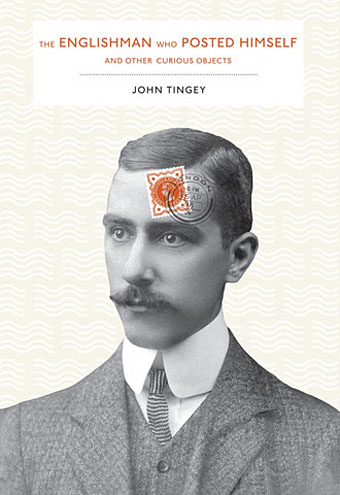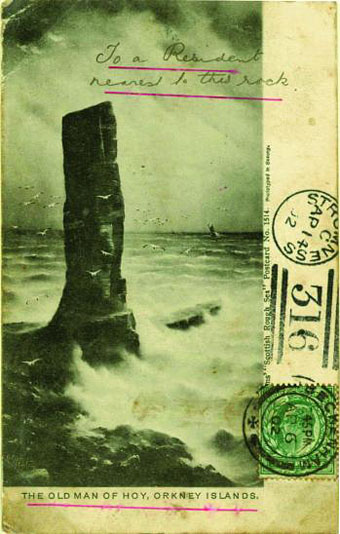Cover design by Deb Wood.
Arriving most appropriately by post last week from Princeton Architectural Press was this fascinating book by John Tingey, an account of Mr W. Reginald Bray (1879–1939) of South London, and his games with the British postal service:
In 1898, Bray purchased a copy of the Post Office Guide, and began to study the regulations published quarterly by the British postal authorities. He discovered that the smallest item one could post was a bee, and the largest, an elephant. Intrigued, he decided to experiment with sending ordinary and strange objects through the post unwrapped, including a turnip, a bowler hat, a bicycle pump, shirt cuffs, seaweed, a clothes brush, even a rabbit’s skull. He eventually posted his Irish terrier and himself (not together), earning him the name “The Human Letter.”
In addition to posting himself (twice!), Bray also challenged the nation’s postmen by addressing his cards and letters with rebuses, with longitude and latitude coordinates or, as in the example below, a pictorial clue to the location of the recipient. Tingey’s book is illustrated throughout with examples of Bray’s inventiveness, and includes a selection of the autographs he plied from famous individuals of the era (many of whom, it should be noted, are now very un-famous indeed). One of the few people to refuse an autograph was a name with which I’m familiar, the British Symbolist painter George Frederick Watts, and his letter of refusal is also included.
The Englishman who Posted Himself and Other Curious Objects may be purchased direct from the publisher.
Previously on { feuilleton }
• A postcard from Doctor Kafka



What an extraodinarily bizzare character! (the type that used to give Englishmen that unique madness flavour to the mind of people elsewhere, for a while – I am not aware that such quirky reputation is still something widely acknowledged)
Yes, indeed. He might have remained unknown to all but his family if it hadn’t been for Tingey’s curiosity.
Reminds me of the Velvet Underground’s The Gift which was a short story Lou Reed wrote and John Cale narrates in his deadpan Welsh accent on their White Light/White Heat album
http://en.wikipedia.org/wiki/The_Gift_(The_Velvet_Underground_song)
The Gift came to my mind as well. I suppose it’s inevitable if you’ve heard that album.
Long ago, Games magazine used to publish pictures of the insanely addressed mail they’d receive — people would take the time to come up with clever puzzles for the postal workers to solve, and, in those days, they were up to the challenge. But it seems like that practice has died out; presumably such letters are simply returned to the sender.
Mr Bray also had some of his mail returned–examples include the card addressed “To any resident of London”–but I suspect he’d have a tougher time today when the post seems less efficient than it was.